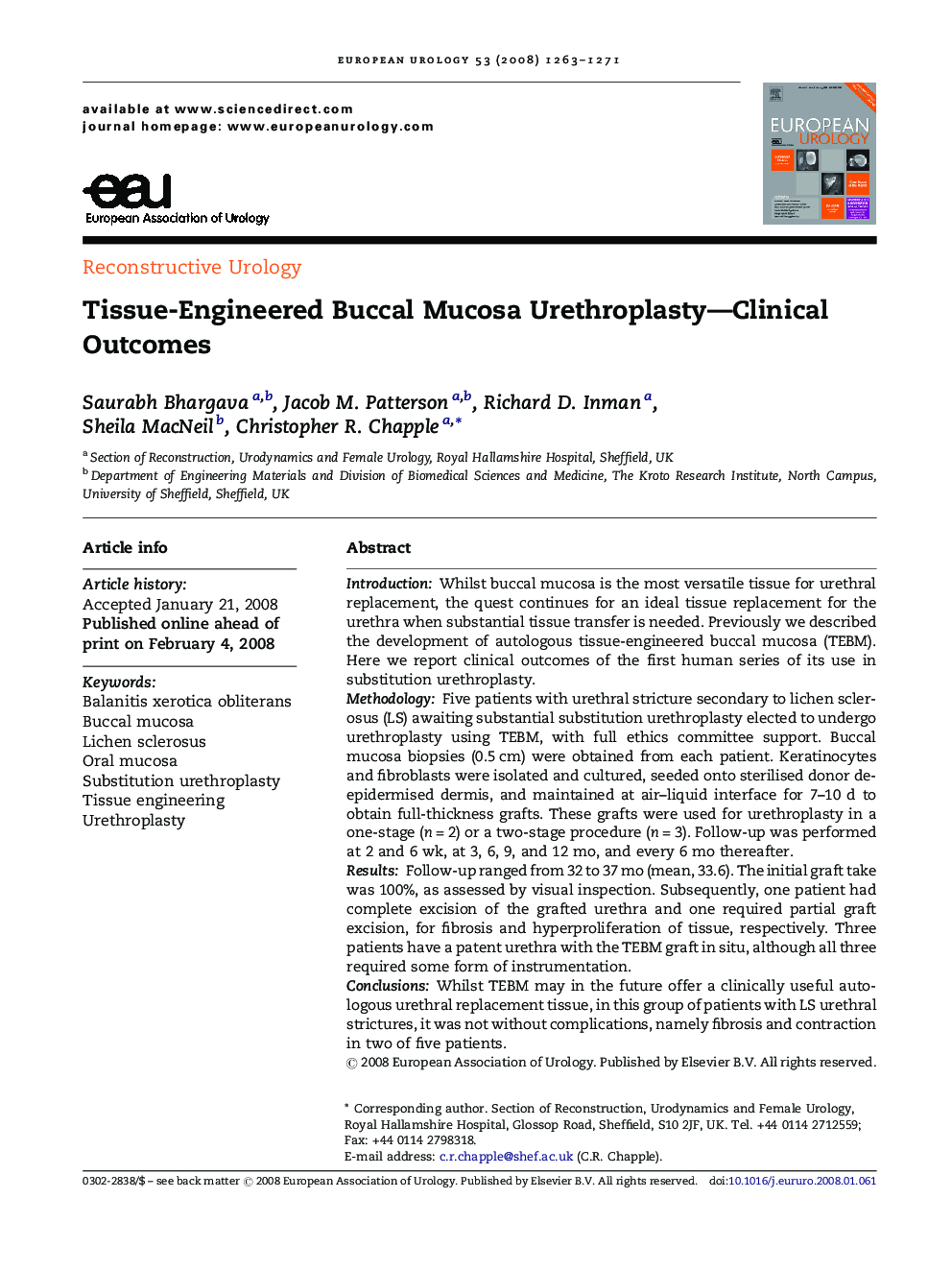| Article ID | Journal | Published Year | Pages | File Type |
|---|---|---|---|---|
| 3927475 | European Urology | 2008 | 9 Pages |
IntroductionWhilst buccal mucosa is the most versatile tissue for urethral replacement, the quest continues for an ideal tissue replacement for the urethra when substantial tissue transfer is needed. Previously we described the development of autologous tissue-engineered buccal mucosa (TEBM). Here we report clinical outcomes of the first human series of its use in substitution urethroplasty.MethodologyFive patients with urethral stricture secondary to lichen sclerosus (LS) awaiting substantial substitution urethroplasty elected to undergo urethroplasty using TEBM, with full ethics committee support. Buccal mucosa biopsies (0.5 cm) were obtained from each patient. Keratinocytes and fibroblasts were isolated and cultured, seeded onto sterilised donor de-epidermised dermis, and maintained at air–liquid interface for 7–10 d to obtain full-thickness grafts. These grafts were used for urethroplasty in a one-stage (n = 2) or a two-stage procedure (n = 3). Follow-up was performed at 2 and 6 wk, at 3, 6, 9, and 12 mo, and every 6 mo thereafter.ResultsFollow-up ranged from 32 to 37 mo (mean, 33.6). The initial graft take was 100%, as assessed by visual inspection. Subsequently, one patient had complete excision of the grafted urethra and one required partial graft excision, for fibrosis and hyperproliferation of tissue, respectively. Three patients have a patent urethra with the TEBM graft in situ, although all three required some form of instrumentation.ConclusionsWhilst TEBM may in the future offer a clinically useful autologous urethral replacement tissue, in this group of patients with LS urethral strictures, it was not without complications, namely fibrosis and contraction in two of five patients.
